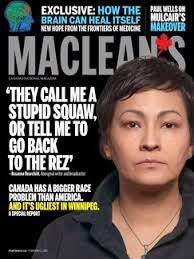I could have walked to the hairdresser’s
this morning. It’s only ten blocks
in our small city. The cold (−14° C) wasn’t a factor; it
takes a lot of weather to phase prairie people. We know how to dress for cold. Sure, a one kilometre walk each way is great exercise. Did I want to squish my new hair cut
under a head band or a toque, though?
Maybe not. So I drove. For convenience.
Convenience is bad for the
environment. Think of diapers,
disposable dishware, pencils we don’t have to sharpen, pens that don’t need
refills, and packaged soaked cloths to clean the floor. Consider as well single-serve coffee
capsules, or pods, for
single-serve brewers. No large coffee maker, no grounds, no
drips, no mess. So
convenient. And, people who use
them tell me, you get a great cup of coffee. But is the convenience of those single-serve pods worth all
the garbage?
 I have never been able to understand the
popularity of these machines in an age of environmental consciousness. They decorate many a kitchen counter in
home and office. Imagine the
accumulated waste! How many cups
of coffee per day for each person, multiplied by the number of people in the
office or home, multiplied by the number of offices or homes. No wonder that discarded K-cups,
8.3 billion in 2013 (Keurig only, not counting other brands), could circle the
globe almost 11 times (author Murray Carpenter did the math in Caffeinated, referenced in Macleans by Rosemary Counter, “Pop
people, rise up,” February 2, 2015). I feel vindicated. No one else I know seems to be worried about it.
I have never been able to understand the
popularity of these machines in an age of environmental consciousness. They decorate many a kitchen counter in
home and office. Imagine the
accumulated waste! How many cups
of coffee per day for each person, multiplied by the number of people in the
office or home, multiplied by the number of offices or homes. No wonder that discarded K-cups,
8.3 billion in 2013 (Keurig only, not counting other brands), could circle the
globe almost 11 times (author Murray Carpenter did the math in Caffeinated, referenced in Macleans by Rosemary Counter, “Pop
people, rise up,” February 2, 2015). I feel vindicated. No one else I know seems to be worried about it.
Make no mistake—I am no environmental saint. My sins add
up, and I confess them here :
·
I still cave to Iced
Cappucinos, despite the one-use container (technically recyclable).
·
I don’t compost (yet, I tell
myself).
·
We don’t have solar panels on
our home.
·
We have a large, older home,
that requires a lot of energy to heat.
·
I shower daily—longer and
hotter than they would need to be.
·
When menstrual cups were touted
as an answer to the waste from sanitary napkins, I swore I would be the last
person to use them. I drew my line
in the sand right there.
·
I enjoy packaged wet cloths for
the floor.
·
I don’t plant a garden any more
and yet.
Over the years, however, I have tried to do
my tiny bit for the environment. Think globally, act locally, to borrow
the social justice mantra. Serious
environmentalists might scoff at my minimal efforts; still, I do manage a
few actions that at least don’t make the situation worse.
·
I use bins and cloth bags for
groceries.
·
We recycle.
·
I keep my vegetables loose in
the grocery cart and out of one-use plastic bags, whenever I can.
·
I take a travel mug to meetings
and on trips.
·
I purchased a water bottle with
a filter to avoid plastic water bottles on our last trip.
·
I used cloth diapers for all
three children.
·
I stop the car for trains and
road-construction queues.
·
I reserve disposable dishware
at home for gatherings of more than thirty people. When my fanatical side has clawed through the barriers of both
convenience and difference, I have taken my own dishware along to functions,
even to Taste of Manitoba years ago.
·
I very seldom purchase single-serve
prepared food.
·
I purchase paper towels and
toilet paper made from recycled paper.
·
I purchase as much organic
produce and products as availability and my budget allow.
So given my exposed vascillation on
environmental action, why do coffee pods bother me so much? Companies, just as much as individuals,
I feel, have a respsonsibility to contribute to an environmental solution, not
to the problem. Single-serve pods
create garbage. Recycling for
those pods that can be recycled is messy and labour-intensive. Why put something on the market that
doesn’t consider the environmental impact? Why encourage people to create more garbage? The obvious answer, to make money, just
doesn’t cut it. K-cup packs won’t
be recyclable until 2020. That’s
at least 8.3 billion times 7 years (2013 – 2019), or 58.1 billion cups in
landfills. Is convenience so
important to us that we are willing to pay that price? “If companies start out with a more
corporate responsible product, that'd make more sense,” add the makers of the Kill the K-Cup video posted to YouTube a
few weeks ago. In the meantime, Keurig and Ekobrew offer a reusable filter option that uses ground coffee. Why not have integrated a reusable cup into the nature of the machine in the first place, and dispensed with the disposable pods? Would the gadget be as popular without the disposable option? If not, what does that say about us as consumers and our concern for the environment?
For now, our household continues to forego the convenience of a single-serve coffee maker. I am grateful to Mr. Carpenter for crunching the numbers
on coffee pods, and to Macleans for
reporting on his book and on the coffee-pod phenomenon. I don’t feel so alone any more.









